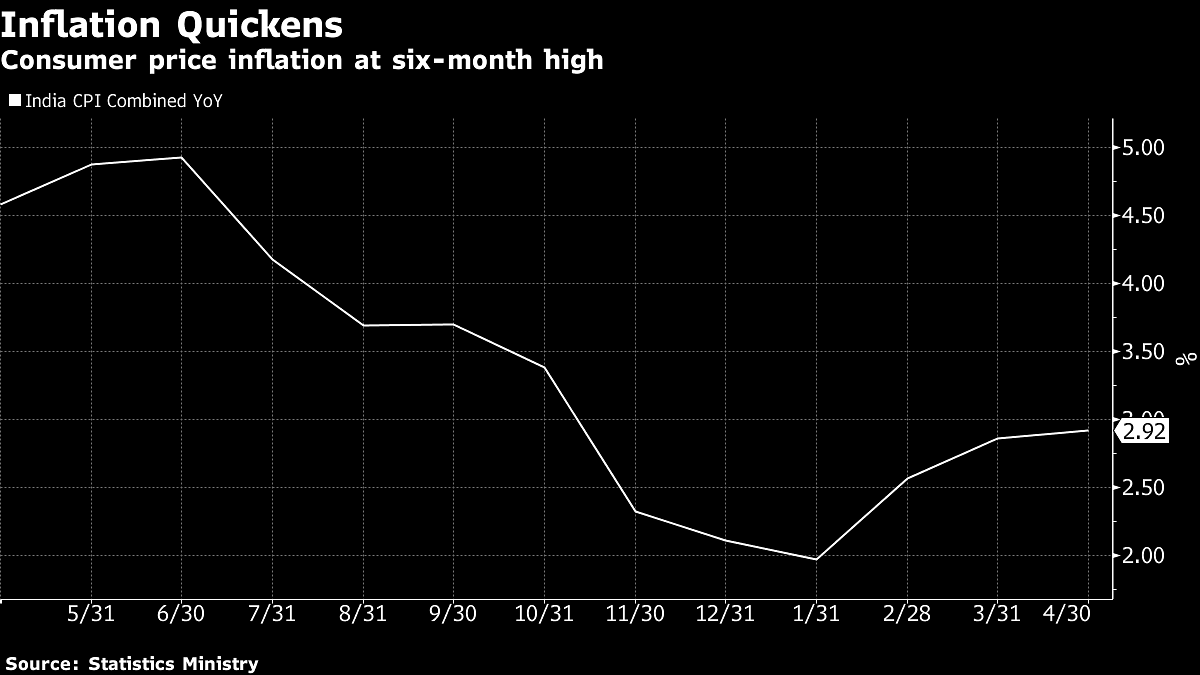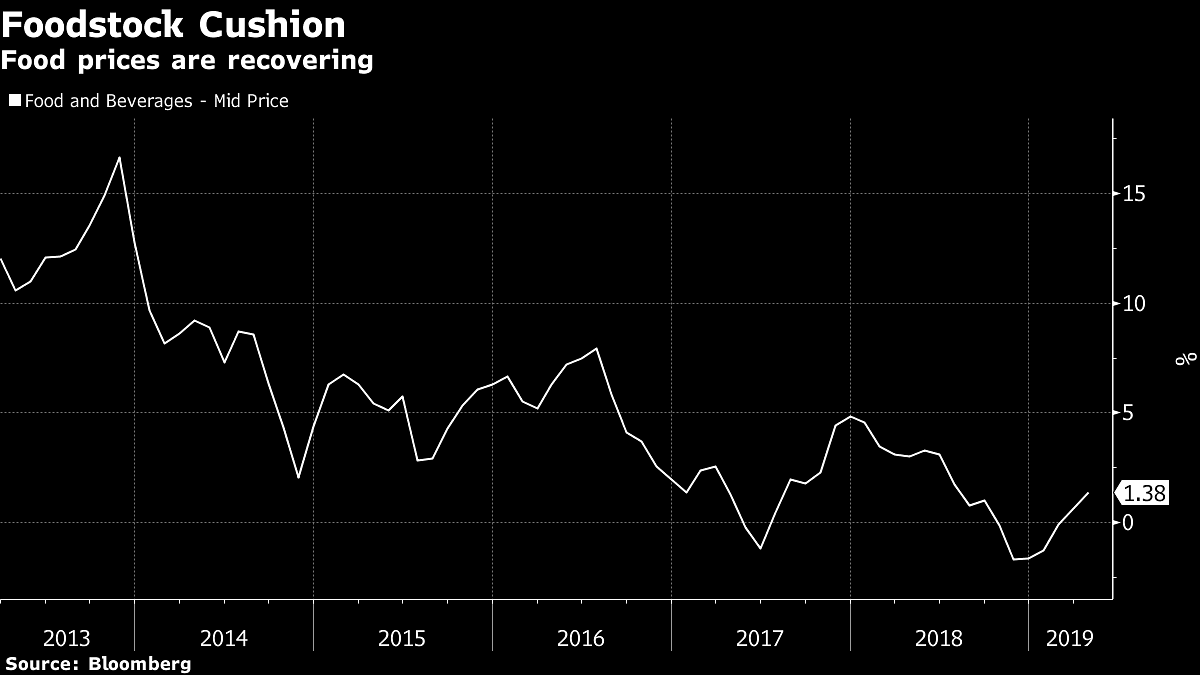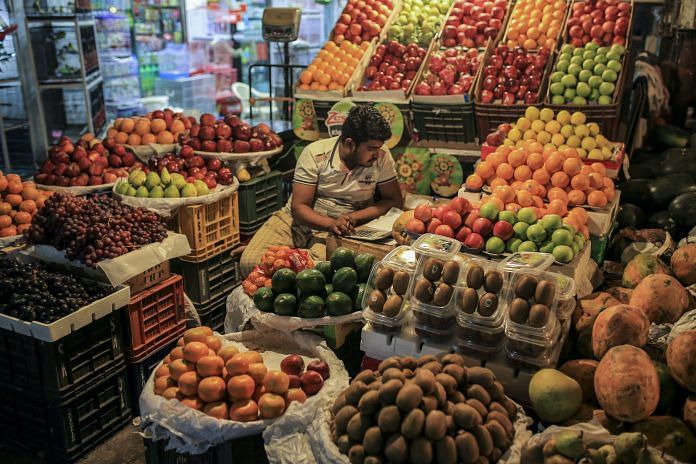Mumbai: Inflation in India is rebounding and on course to accelerate after the world’s biggest election concludes this month. Yet that’s unlikely to distract monetary policy makers from their focus on supporting economic growth.
Data on Monday showed consumer prices rose 2.92% in April from a year earlier, compared with the 2.99% median estimate in a Bloomberg survey of 39 economists. While the reading is the highest in six months, the price growth is, for now, well below the central bank’s 4% medium-term target for this year.

Retail fuel prices present the biggest threat to the central bank’s forecast, with the Indian basket of crude climbing to $70.78 a barrel as of Friday from $66.53 at the end of March. That’s being offset by waning domestic economic activity amid a global slowdown and renewed U.S.-China trade tensions, which gives the Monetary Policy Committee room to maintain its dovish tilt after two interest rate cuts this year.
With indicators from car sales to liquidity suggesting that economic activity may be cooling, economists expect at least one more rate reduction in the coming months, possibly as early as the next policy meeting on June 3-6.
“We remain cautious on the inflation trajectory,” said Priyanka Kishore, an economist at Oxford Economics Ltd. in Singapore. “But with the latest data and external developments pointing towards stronger downside risks to growth in the near term, rather than upside risks to inflation, we pencil in another 25 basis-point rate cut in the June monetary policy meeting.”
New Government
India will have a new government after May 23 when the election results of the lower house of parliament are announced. State-run fuel companies have kept pump prices for diesel and gasoline relatively stable during the elections, but may increase those after the seven-phase voting concludes next week.
What Bloomberg’s Economists Say
“Fuel prices are likely to be raised gradually after the May 23 election results. At that point, we expect the decline in core inflation to pause for a few months. Still, further ahead strong favorable base effects are expected to resume the downtrend in core inflation in the October-to-December period.”
— Abhishek Gupta, India economist
Core inflation, which strips out volatile fuel and food prices, has eased since November last year with economists expecting it to move toward the headline inflation rate in the coming months. The core measure, which stood at 5.01% in March, eased to 4.55% in April.

Policy makers will be relaxed about underlying inflationary pressures as well as an uptick in food prices given record food stocks. Rather it’s the prospect of weakening growth in rural India that should have them worried should the monsoon rain between June and September fall short.
The monsoon is critical to the farm sector as it accounts for more than 70% of India’s annual showers and irrigates more than half the country’s farmland.
“We believe that weak monsoons, sustained high interest rates, weak rural demand and reduced space for government expenditure will continue to weigh on GDP growth prospects,” said Suvodeep Rakshit, an economist at Kotak Institutional Equities.
Key Points From Inflation Print
Consumer food price inflation rose 1.1% Fuel and light prices rose 2.56% Housing prices rose 4.76% Clothing and footwear prices rose 2.01% – Bloomberg
Also read: Inflation accelerates to six-month high after 2.92% rise in April






